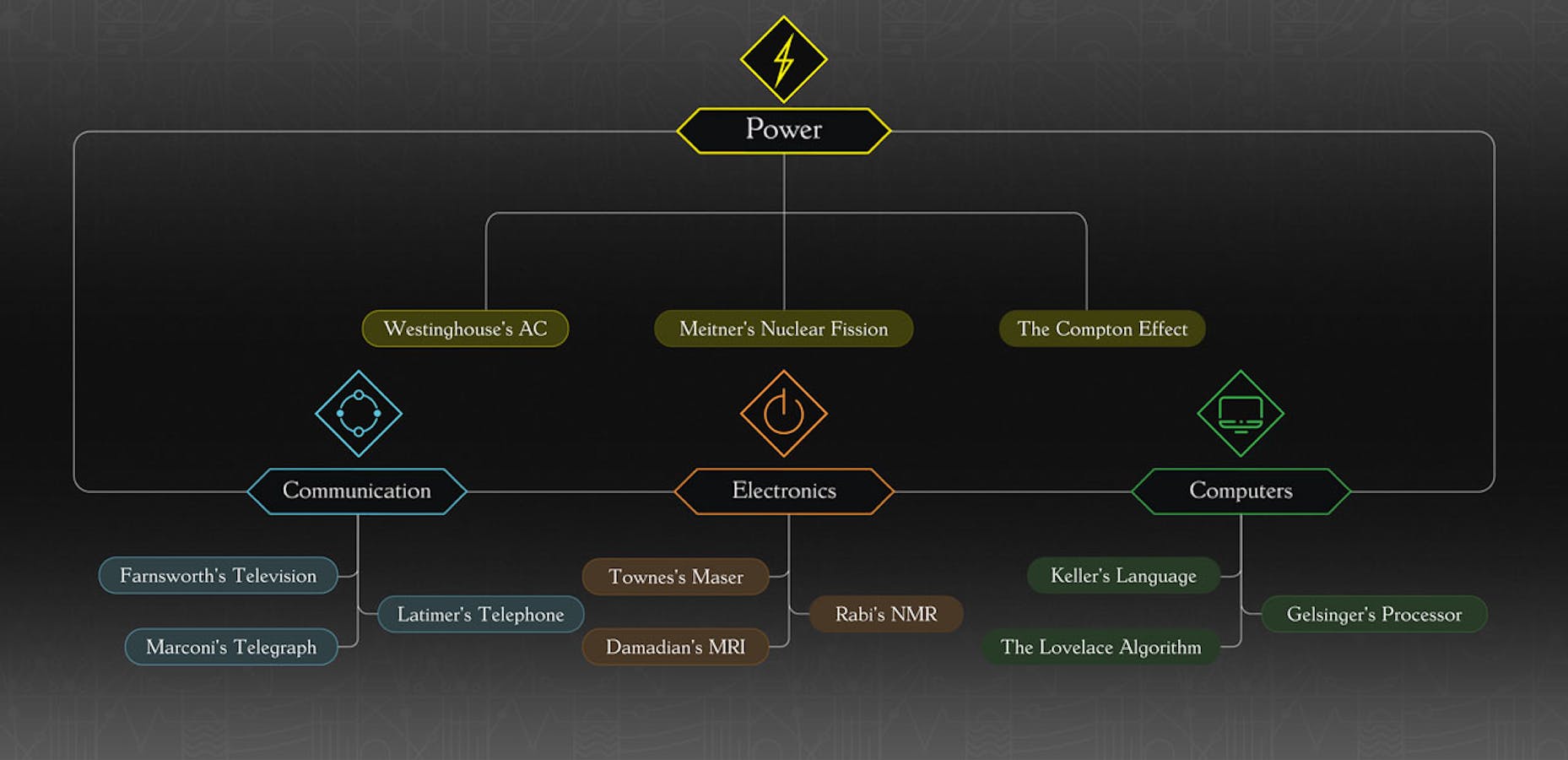Today, our lives are dominated by technology. Smartphones, computers, and other devices have allowed us to conquer darkness and distance, transforming our lives and reshaping our world.
Modern technology is not the product of a single individual or discovery. Rather, it is the result of the work of countless men and women. Many were inspired by the Bible’s vision of a better world to create these technological advances.
“Almighty God, who has created man in Thine own image . . . teach us to study the works of Thy hands, that we may subdue the earth to our use.”
James Clerk Maxwell, ca. 1865–69
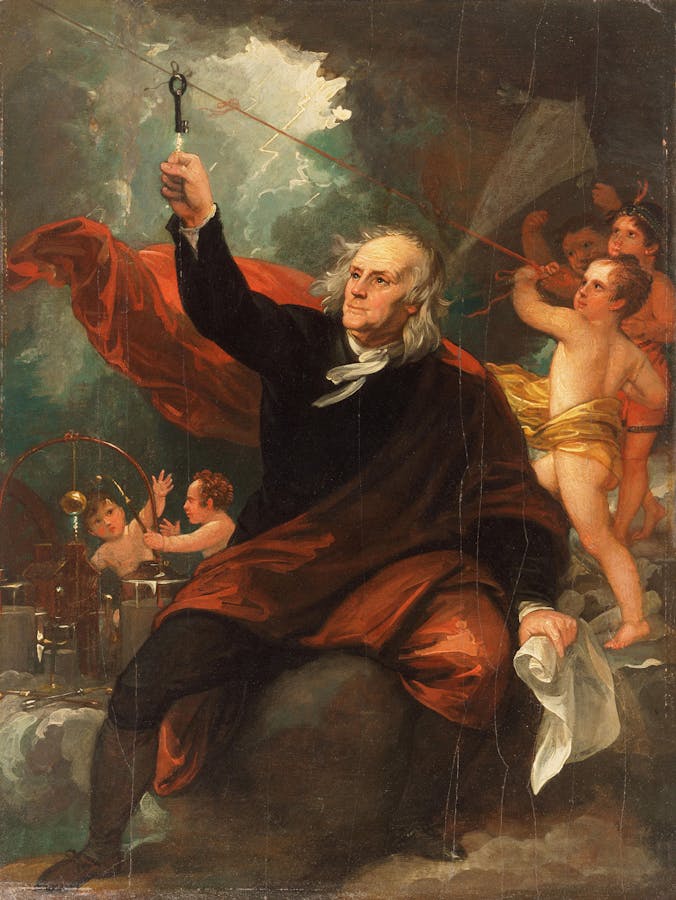
Commonly misidentified as the inventor of electricity, Benjamin Franklin was among the first scientists to prove that lightning is a form of electricity in his 1752 kite experiment.
Philadelphia Museum of Art: Benjamin Franklin Drawing Electricity from the Sky, by Benjamin West, Gift of Mr. and Mrs. Wharton Sinkler, 1958, 1958-132-1, https://philamuseum.org/collection/object/57044
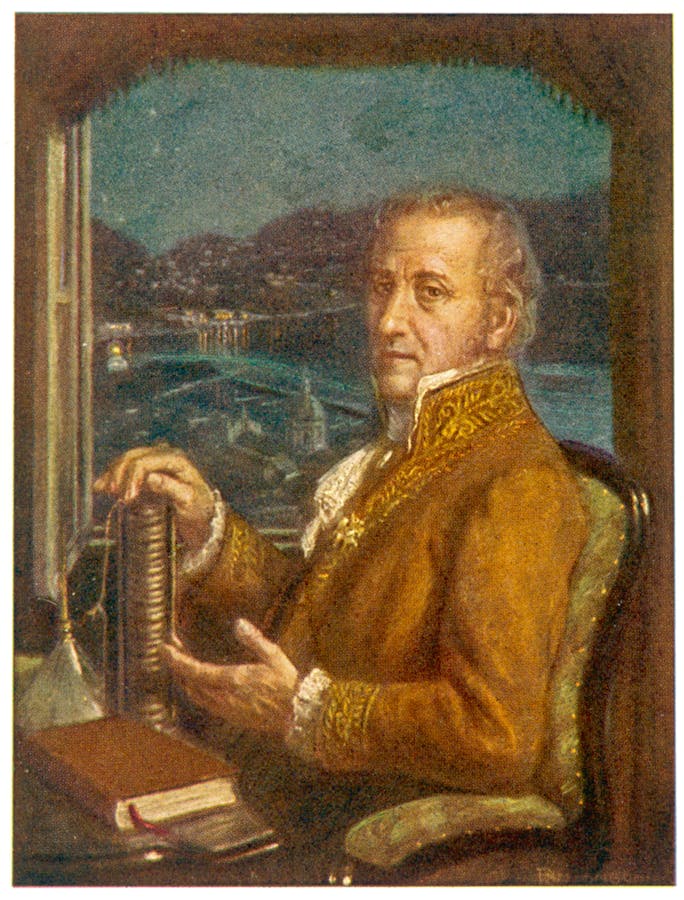
Alessandro Volta gestures to his battery, which produced a stable electric current in a closed circuit by alternately stacking pairs of zinc discs, salt water-soaked pieces of cloth, and pairs of copper discs.
Chronicle / Alamy Stock Photo
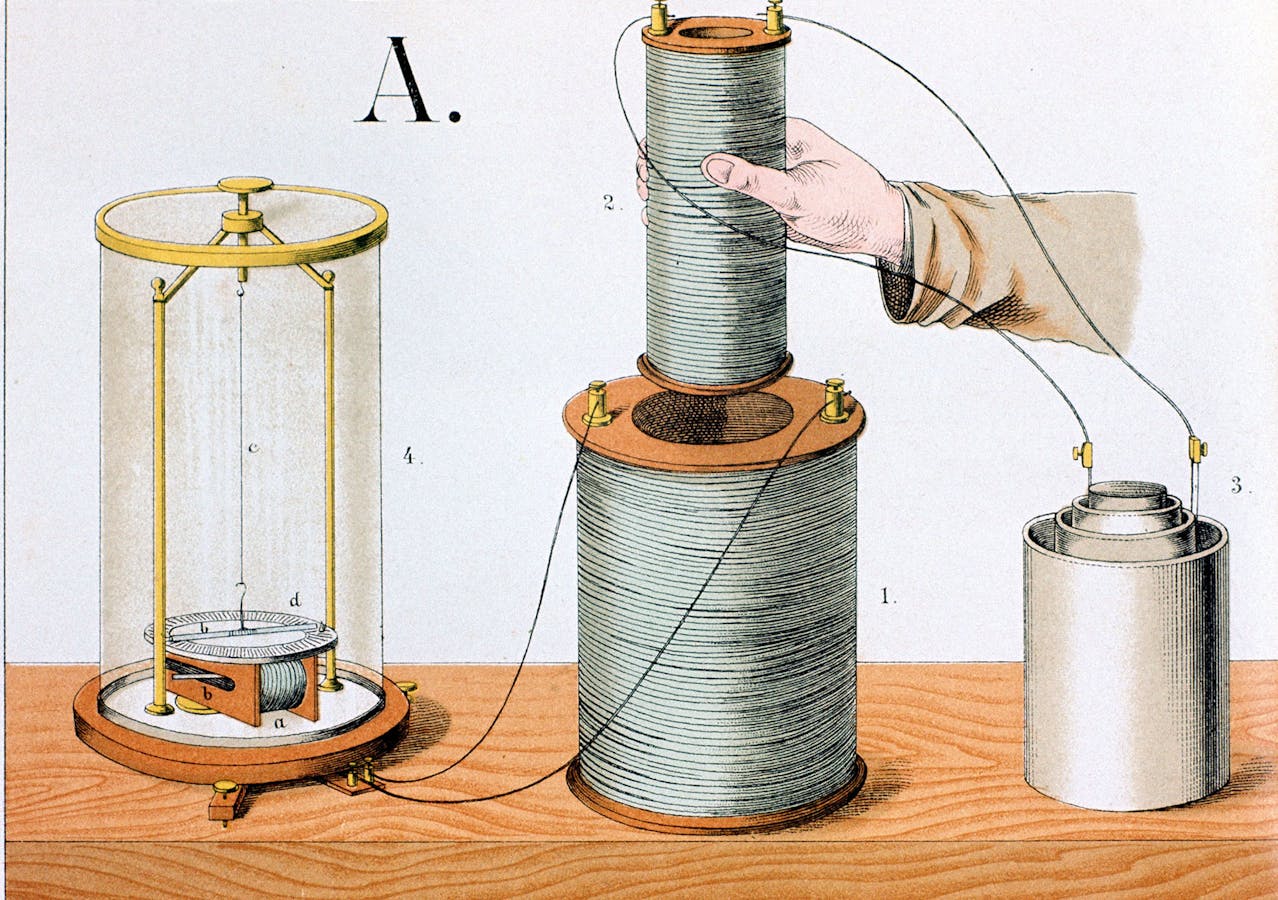
In 1831, after ten years of experimenting, Michael Faraday successfully proved magnetism could generate electricity. This diagram from 1882 depicts Faraday’s electromagnetic induction experiment.
The Print Collector / Alamy Stock Photo
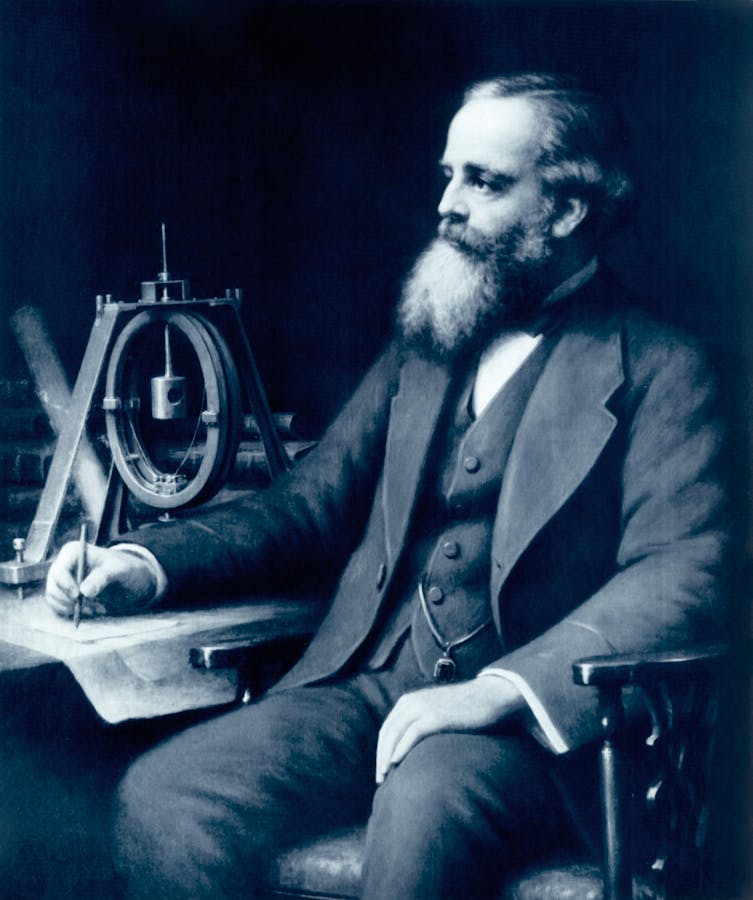
A portrait of James Clerk Maxwell. The tool just behind his right arm is the spinning coil apparatus that determined the value of ohm, a unit of measurement for electrical resistance.
Science History Images / Alamy Stock Photo
Light available 24 hours a day. Air conditioning that allows us to live comfortably in the heat of summer. X-rays and MRIs that enable us to better diagnose diseases. Computers and communications systems that connect us instantaneously to others around the globe.
All of these advances—and more—have been made possible by our ability to describe, control, and utilize electricity.
After centuries as a scientific curiosity, electricity became an essential tool for modern life in the 1800s. Alessandro Volta, an Italian chemist and physicist, helped usher in this new age in 1800 with his invention of the first battery, or “voltaic pile,” which proved electricity could be produced chemically and opened the door for greater advances in electromagnetic research.
Volta was a devout Catholic throughout his life, attending Mass daily and serving as a parish catechist. Today, the standard unit of electrical potential is named in his honor: the “volt.”
In the 1820s, Michael Faraday, an English physicist and devout Christian, broke new ground by conducting experiments that revealed that moving magnets through loops of wire created an electric current.
The discovery of electromagnetic “induction” revolutionized how we make and use energy, paving the way for generators, stovetops, and even electric cars. Faraday believed this discovery pointed to an underlying order in nature established by God.
Scottish physicist James Clerk Maxwell revolutionized our understanding of light, electricity, and magnetism. In the 1850s, Maxwell developed a set of equations that described electromagnetism in precise mathematical detail, showing that electricity, magnetism, and light were an interrelated phenomenon. This paved the way for practical applications such as television, radio, and even microwave ovens.
Maxwell was a devout Christian who memorized extensive portions of the Bible, believing that scripture and science offered two different avenues to learn about God.
“The book of nature, which we have to read, is written by the finger of God.”
Michael Faraday, Experimental Researches in Chemistry and Physics, 1859
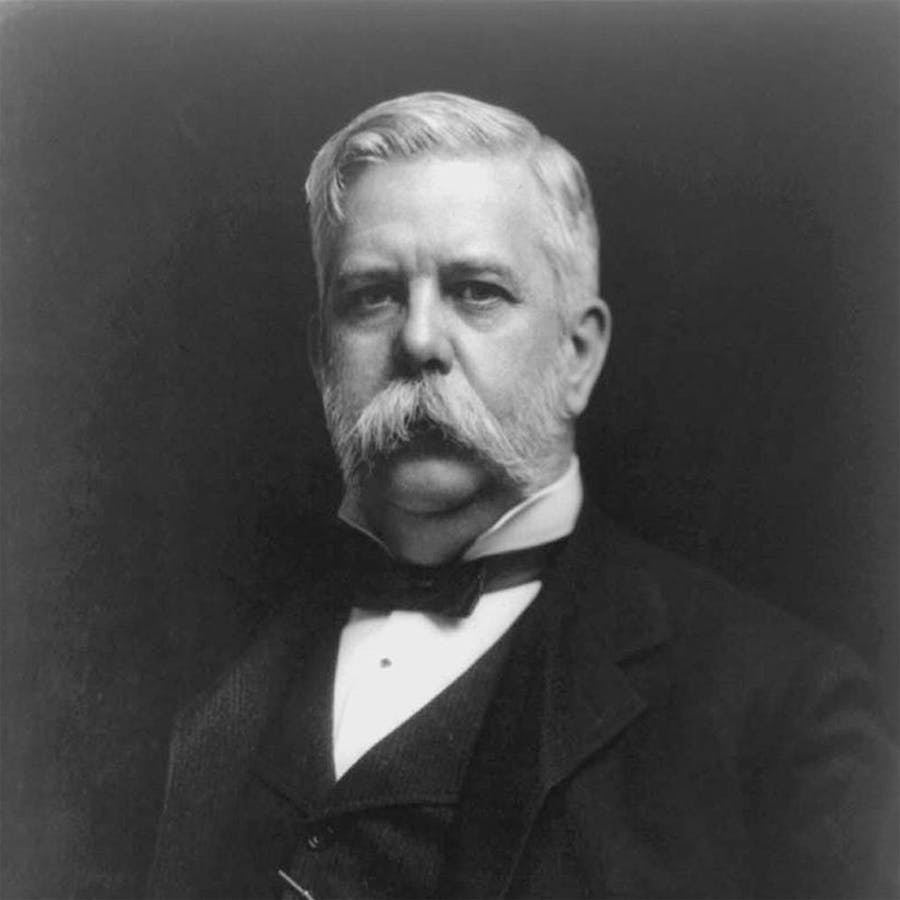
George Westinghouse
Public domain, via Wikimedia Commons
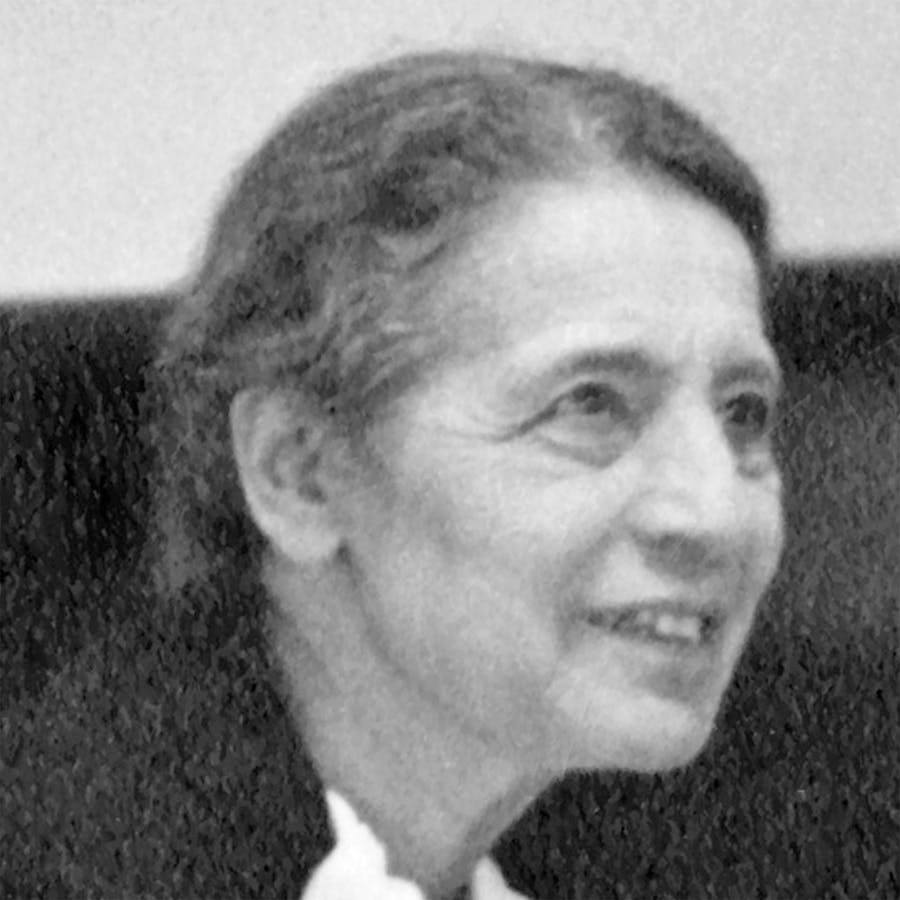
Lise Meitner
Public domain, via Wikimedia Commons
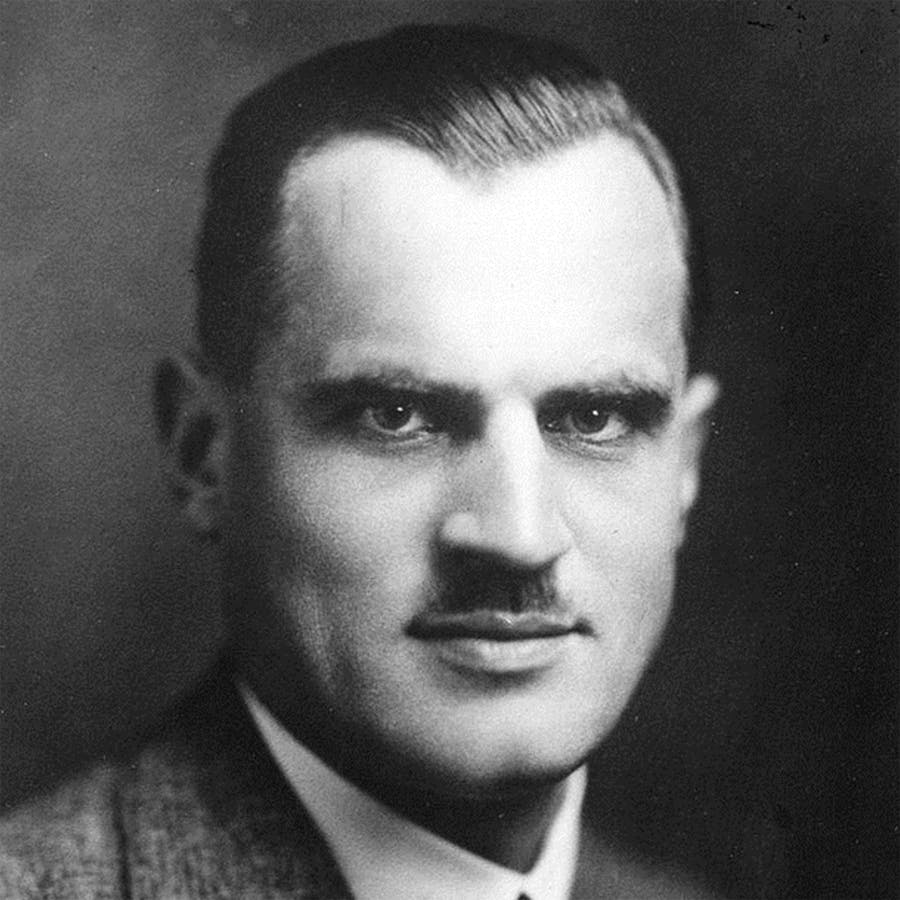
Arthur Holly Compton
Public domain, via Wikimedia Commons

Lewis Howard Latimer
Public domain, via Wikimedia Commons
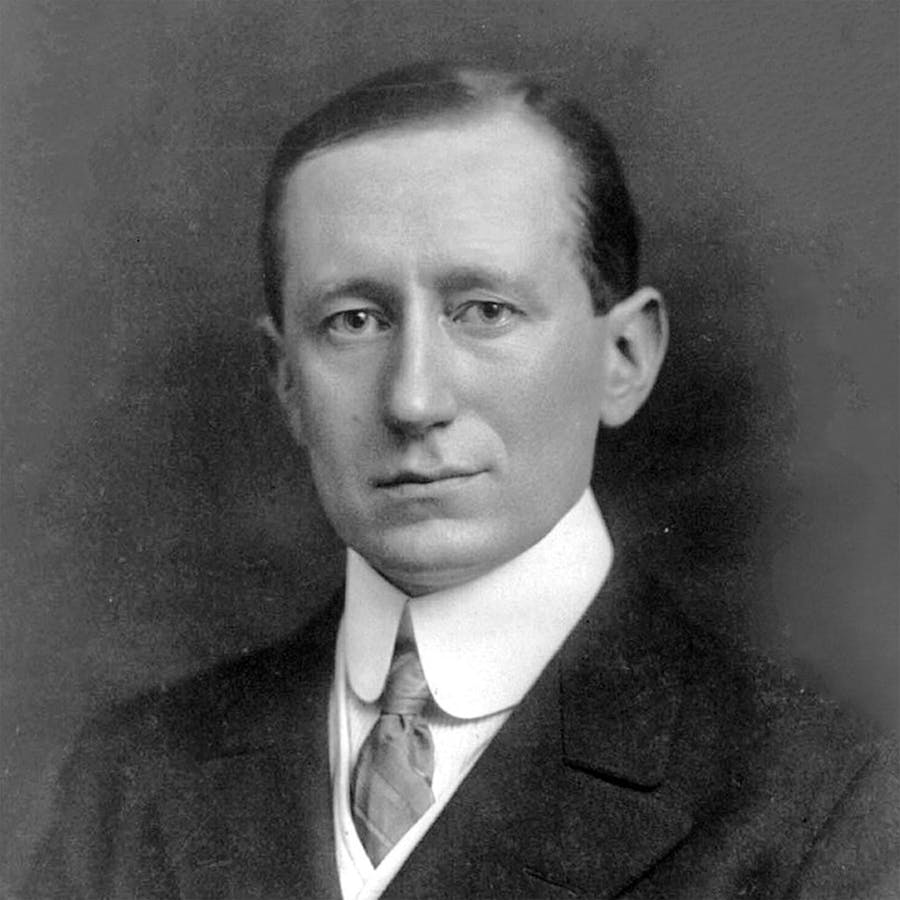
Guglielmo Marconi
Public domain, via Wikimedia Commons

Philo T. Farnsworth
Public domain, via Wikimedia Commons
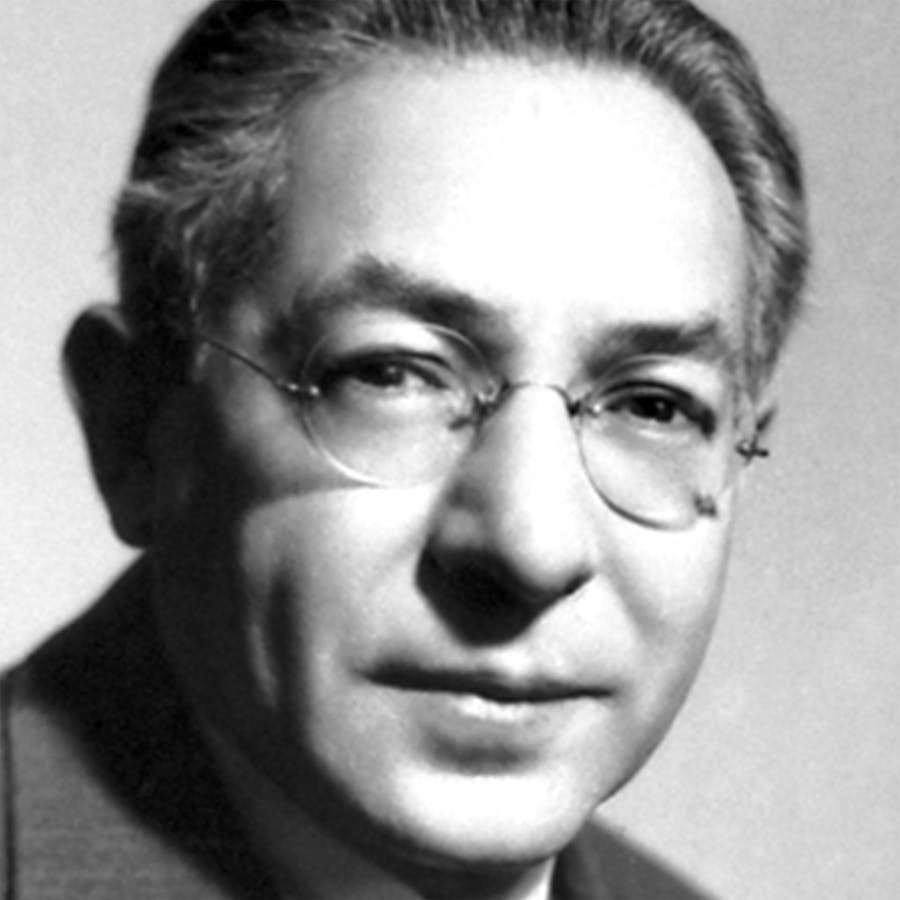
Isidor Isaac Rabi
Public domain, via Wikimedia Commons

Charles Hard Townes
Public domain, via Wikimedia Commons

Raymond Damadian
Courtesy of Creation Ministries

Ada Lovelace
Public domain, via Wikimedia Commons

Mary Kenneth Keller
Public domain, via Wikimedia Commons
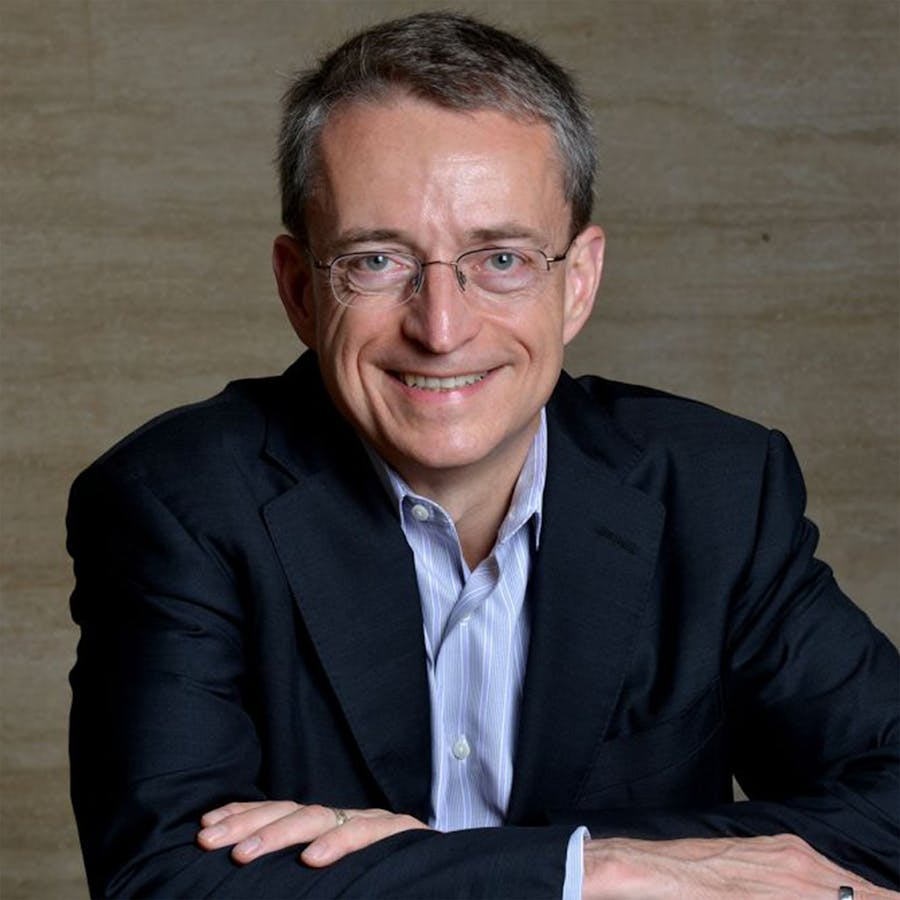
Patrick P. Gelsinger clicked during a photo shoot in Mumbai.
Milind Shelte / The India Today Group via Getty Images
Scientific breakthroughs in the 1800s unleashed several technologies that have become an ordinary part of modern life. How did people of faith contribute to these technological advances?
George Westinghouse was an American engineer and industrialist whose Westinghouse Electric & Manufacturing Company introduced and developed alternating current for commercial power use, lighting up factories and homes across the country in the late 1800s. His approach to innovation and business was shaped by his Presbyterian upbringing, which led him to seek more efficient ways to produce products while also improving the lives of his employees.
Austrian-Swedish physicist Lise Meitner built upon the insights of Maxwell and others, helping to discover the process of nuclear fission and the incredible potential of nuclear power. A Christian of Jewish ancestry, Meitner had to flee Nazi Germany in 1938. Today, some consider her the greatest woman scientist of the twentieth century.
In 1927, Arthur Holly Compton won the Nobel Prize for his discovery of the Compton effect, which confirmed that electromagnetic radiation was both a wave and a particle. During World War II, he became a key figure in the Manhattan Project, supervising Robert Oppenheimer’s efforts in Los Alamos to develop the first atomic bomb. The world revealed by modern physics, Compton wrote, “can only be the result of an intelligence working through nature.”
Lewis Howard Latimer was an African American inventor who significantly improved the light bulb by introducing the use of carbon filament. Born to parents who escaped slavery, and despite no formal education, he eventually worked closely with Thomas Edison, writing the first book on electric lighting in 1890, and helped Alexander Graham Bell patent the telephone. A devout theist, Latimer was also one of the founding members of the First Unitarian Church of Flushing, New York.
Guglielmo Marconi, an Italian physicist, created the wireless telegraph in 1896, paving the way for radio. In 1931, he would go on to build the world’s first international shortwave broadcast station, Vatican Radio. Introducing Pope Pius XI for the first time, Marconi stated, “With the help of God, who places so many mysterious forces of nature at man’s disposal, I have been able to prepare this instrument which will give to the faithful of the entire world the joy of listening to the voice of the Holy Father.”
Philo T. Farnsworth, an American inventor and devout Mormon, created the electronic television in 1927. Farnsworth stated, “I am a deeply religious man. I know that God exists . . . I know that I have never invented anything. I have been a medium by which these things were given to the culture as fast as culture could earn them. I give the credit to God.”
Isidor Isaac Rabi was a Jewish American physicist who won the Nobel Prize in 1944 for his discovery of nuclear magnetic resonance. He was raised in a devout Jewish family. While he grew critical of organized religion, he later stated, “My early upbringing, so struck by God, the maker of the world, this has stayed with me.” His discovery led to innovations ranging from lasers to atomic clocks.
American physicist and Christian Charles Hard Townes pioneered the development and application of the maser in the 1950s as well as other work in quantum electronics. This research would eventually have wide application to industry, medicine, and even space travel.
In 1971, American physician Raymond Damadian performed the first full-body MRI, or magnetic resonance imaging. He pioneered the technology, which uses radio waves and magnetic fields to produce detailed images of organs and tissues in the body. As Damadian wrote, “As Christians we believe God has placed us here to actually make a difference in the world . . . For me, I have found a way through scientific discovery.”
Ada Lovelace, an English mathematician, is regarded today as the first computer programmer. Working closely with her colleague and mentor, Charles Babbage, from 1842 to 1843, she helped optimize the design and operation of his “Analytical Engine,” eventually developing the first algorithm that could be carried out by a machine. As she wrote, “I am more than ever now the bride of science. Religion to me is science, and science is religion. In that deeply-felt truth lies the secret of my intense devotion to the reading of God’s natural works.”
In 1965, Mary Kenneth Keller, a Catholic nun, became the first woman to earn a doctorate in computer science. During her graduate studies, she worked in Dartmouth’s then men-only computer lab collaborating with male counterparts to create the BASIC computer programming language.
Pat Gelsinger is an American engineer and CEO of Intel who contributed to the development of the Intel 486 processor, introduced in 1989, and served as a key figure behind the modern computer revolution. He views his work as a form of vocation, citing Colossians 3:23, “Whatever you do, work at it with all your heart, as working for the Lord, not for human masters.”

Commonly misidentified as the inventor of electricity, Benjamin Franklin was among the first scientists to prove that lightning is a form of electricity in his 1752 kite experiment.
Philadelphia Museum of Art: Benjamin Franklin Drawing Electricity from the Sky, by Benjamin West, Gift of Mr. and Mrs. Wharton Sinkler, 1958, 1958-132-1, https://philamuseum.org/collection/object/57044

Alessandro Volta gestures to his battery, which produced a stable electric current in a closed circuit by alternately stacking pairs of zinc discs, salt water-soaked pieces of cloth, and pairs of copper discs.
Chronicle / Alamy Stock Photo

In 1831, after ten years of experimenting, Michael Faraday successfully proved magnetism could generate electricity. This diagram from 1882 depicts Faraday’s electromagnetic induction experiment.
The Print Collector / Alamy Stock Photo

A portrait of James Clerk Maxwell. The tool just behind his right arm is the spinning coil apparatus that determined the value of ohm, a unit of measurement for electrical resistance.
Science History Images / Alamy Stock Photo
Light available 24 hours a day. Air conditioning that allows us to live comfortably in the heat of summer. X-rays and MRIs that enable us to better diagnose diseases. Computers and communications systems that connect us instantaneously to others around the globe.
All of these advances—and more—have been made possible by our ability to describe, control, and utilize electricity.
After centuries as a scientific curiosity, electricity became an essential tool for modern life in the 1800s. Alessandro Volta, an Italian chemist and physicist, helped usher in this new age in 1800 with his invention of the first battery, or “voltaic pile,” which proved electricity could be produced chemically and opened the door for greater advances in electromagnetic research.
Volta was a devout Catholic throughout his life, attending Mass daily and serving as a parish catechist. Today, the standard unit of electrical potential is named in his honor: the “volt.”
In the 1820s, Michael Faraday, an English physicist and devout Christian, broke new ground by conducting experiments that revealed that moving magnets through loops of wire created an electric current.
The discovery of electromagnetic “induction” revolutionized how we make and use energy, paving the way for generators, stovetops, and even electric cars. Faraday believed this discovery pointed to an underlying order in nature established by God.
Scottish physicist James Clerk Maxwell revolutionized our understanding of light, electricity, and magnetism. In the 1850s, Maxwell developed a set of equations that described electromagnetism in precise mathematical detail, showing that electricity, magnetism, and light were an interrelated phenomenon. This paved the way for practical applications such as television, radio, and even microwave ovens.
Maxwell was a devout Christian who memorized extensive portions of the Bible, believing that scripture and science offered two different avenues to learn about God.
“The book of nature, which we have to read, is written by the finger of God.”
Michael Faraday, Experimental Researches in Chemistry and Physics, 1859

George Westinghouse
Public domain, via Wikimedia Commons

Lise Meitner
Public domain, via Wikimedia Commons

Arthur Holly Compton
Public domain, via Wikimedia Commons

Lewis Howard Latimer
Public domain, via Wikimedia Commons

Guglielmo Marconi
Public domain, via Wikimedia Commons

Philo T. Farnsworth
Public domain, via Wikimedia Commons

Isidor Isaac Rabi
Public domain, via Wikimedia Commons

Charles Hard Townes
Public domain, via Wikimedia Commons

Raymond Damadian
Courtesy of Creation Ministries

Ada Lovelace
Public domain, via Wikimedia Commons

Mary Kenneth Keller
Public domain, via Wikimedia Commons

Patrick P. Gelsinger clicked during a photo shoot in Mumbai.
Milind Shelte / The India Today Group via Getty Images
Scientific breakthroughs in the 1800s unleashed several technologies that have become an ordinary part of modern life. How did people of faith contribute to these technological advances?
George Westinghouse was an American engineer and industrialist whose Westinghouse Electric & Manufacturing Company introduced and developed alternating current for commercial power use, lighting up factories and homes across the country in the late 1800s. His approach to innovation and business was shaped by his Presbyterian upbringing, which led him to seek more efficient ways to produce products while also improving the lives of his employees.
Austrian-Swedish physicist Lise Meitner built upon the insights of Maxwell and others, helping to discover the process of nuclear fission and the incredible potential of nuclear power. A Christian of Jewish ancestry, Meitner had to flee Nazi Germany in 1938. Today, some consider her the greatest woman scientist of the twentieth century.
In 1927, Arthur Holly Compton won the Nobel Prize for his discovery of the Compton effect, which confirmed that electromagnetic radiation was both a wave and a particle. During World War II, he became a key figure in the Manhattan Project, supervising Robert Oppenheimer’s efforts in Los Alamos to develop the first atomic bomb. The world revealed by modern physics, Compton wrote, “can only be the result of an intelligence working through nature.”
Lewis Howard Latimer was an African American inventor who significantly improved the light bulb by introducing the use of carbon filament. Born to parents who escaped slavery, and despite no formal education, he eventually worked closely with Thomas Edison, writing the first book on electric lighting in 1890, and helped Alexander Graham Bell patent the telephone. A devout theist, Latimer was also one of the founding members of the First Unitarian Church of Flushing, New York.
Guglielmo Marconi, an Italian physicist, created the wireless telegraph in 1896, paving the way for radio. In 1931, he would go on to build the world’s first international shortwave broadcast station, Vatican Radio. Introducing Pope Pius XI for the first time, Marconi stated, “With the help of God, who places so many mysterious forces of nature at man’s disposal, I have been able to prepare this instrument which will give to the faithful of the entire world the joy of listening to the voice of the Holy Father.”
Philo T. Farnsworth, an American inventor and devout Mormon, created the electronic television in 1927. Farnsworth stated, “I am a deeply religious man. I know that God exists . . . I know that I have never invented anything. I have been a medium by which these things were given to the culture as fast as culture could earn them. I give the credit to God.”
Isidor Isaac Rabi was a Jewish American physicist who won the Nobel Prize in 1944 for his discovery of nuclear magnetic resonance. He was raised in a devout Jewish family. While he grew critical of organized religion, he later stated, “My early upbringing, so struck by God, the maker of the world, this has stayed with me.” His discovery led to innovations ranging from lasers to atomic clocks.
American physicist and Christian Charles Hard Townes pioneered the development and application of the maser in the 1950s as well as other work in quantum electronics. This research would eventually have wide application to industry, medicine, and even space travel.
In 1971, American physician Raymond Damadian performed the first full-body MRI, or magnetic resonance imaging. He pioneered the technology, which uses radio waves and magnetic fields to produce detailed images of organs and tissues in the body. As Damadian wrote, “As Christians we believe God has placed us here to actually make a difference in the world . . . For me, I have found a way through scientific discovery.”
Ada Lovelace, an English mathematician, is regarded today as the first computer programmer. Working closely with her colleague and mentor, Charles Babbage, from 1842 to 1843, she helped optimize the design and operation of his “Analytical Engine,” eventually developing the first algorithm that could be carried out by a machine. As she wrote, “I am more than ever now the bride of science. Religion to me is science, and science is religion. In that deeply-felt truth lies the secret of my intense devotion to the reading of God’s natural works.”
In 1965, Mary Kenneth Keller, a Catholic nun, became the first woman to earn a doctorate in computer science. During her graduate studies, she worked in Dartmouth’s then men-only computer lab collaborating with male counterparts to create the BASIC computer programming language.
Pat Gelsinger is an American engineer and CEO of Intel who contributed to the development of the Intel 486 processor, introduced in 1989, and served as a key figure behind the modern computer revolution. He views his work as a form of vocation, citing Colossians 3:23, “Whatever you do, work at it with all your heart, as working for the Lord, not for human masters.”










